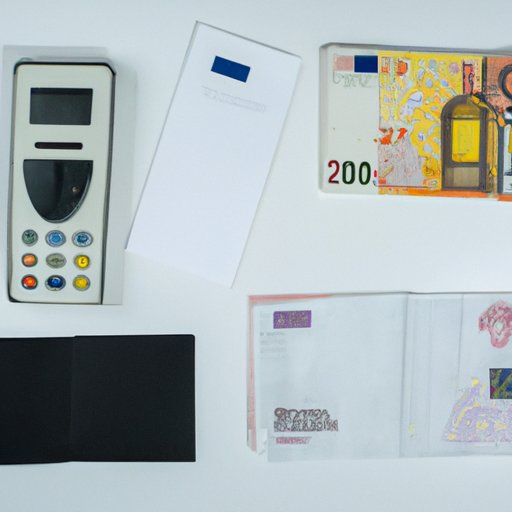
Introduction
Purchasing a money order at the post office can be a convenient and secure way to send money. However, it’s important to understand the pricing involved to avoid any additional costs or fees. In this article, we’ll provide a detailed breakdown of the cost of money orders at the post office.
Everything You Need to Know About the Cost of Money Orders at the Post Office
Money orders are a type of payment often used when cash or checks aren’t accepted. They’re particularly useful for sending money through the mail, as they’re a secure form of payment. The post office is often a reliable source for purchasing money orders.
To purchase a money order at the post office, simply head to the counter and ask for assistance. You’ll need to have cash or a debit card to purchase the money order. The post office will provide a receipt, which you should keep as proof of purchase.
A Guide to Understanding Post Office Money Orders: Prices, Fees and More
The post office offers two types of money orders: domestic and international. Domestic money orders can be used to send money within the United States, while international money orders are used to send money outside of the United States.
The cost of purchasing a money order varies depending on the amount of money being sent. There’s also an issuance fee, which is a flat rate that covers the cost of processing the money order. The issuance fee is currently $1.25 for domestic money orders and $4.50 for international money orders.
It’s worth noting that there may be additional fees if you need to cancel or replace a money order. These fees can range from a few dollars to the full value of the money order.
How Much Do Money Orders Cost at the Post Office? A Detailed Breakdown
Let’s take a closer look at the costs associated with purchasing a money order. The maximum amount you can send with a single money order is $1,000 for domestic money orders and $700 for international money orders. The costs are as follows:
– Domestic money orders up to $500: $1.25 issuance fee
– Domestic money orders over $500 up to $1,000: $1.75 issuance fee
– International money orders: $4.50 issuance fee
As you can see, the cost of purchasing a money order is relatively inexpensive compared to other forms of payment. However, it’s important to factor in any additional costs or fees that may apply.
Money Order Rates at the Post Office: Avoiding Hidden Costs and Extra Fees
While the cost of purchasing a money order at the post office is relatively low, there are other potential costs to be aware of. For example, if you lose the money order or need to cancel it, you may be charged additional fees.
To avoid any additional costs or fees, it’s important to keep your money order receipt in a safe place. You should also double-check the recipient’s details before sending the money order.
Post Office Money Order Prices: Are They Worth the Convenience?
Compared to other sources for purchasing money orders, the post office rates are relatively competitive. However, it’s important to consider the pros and cons of using the post office to purchase money orders.
One of the main advantages of using the post office is the convenience. With thousands of locations nationwide, it’s easy to find a post office near you. Additionally, money orders are a reliable and secure form of payment, making them a good choice for sending money through the mail.
On the other hand, the post office may not always be the most affordable option for purchasing money orders. Depending on your location, there may be other retailers or financial institutions that offer lower rates.
Conclusion
In summary, purchasing a money order at the post office can be a convenient and secure way to send money. While the cost of purchasing a money order is relatively low, it’s important to factor in any additional costs or fees that may apply.
Before purchasing a money order, it may be worth comparing rates from other sources to ensure you’re getting the best deal. And remember, always keep your money order receipt in a safe place to avoid any potential issues.




